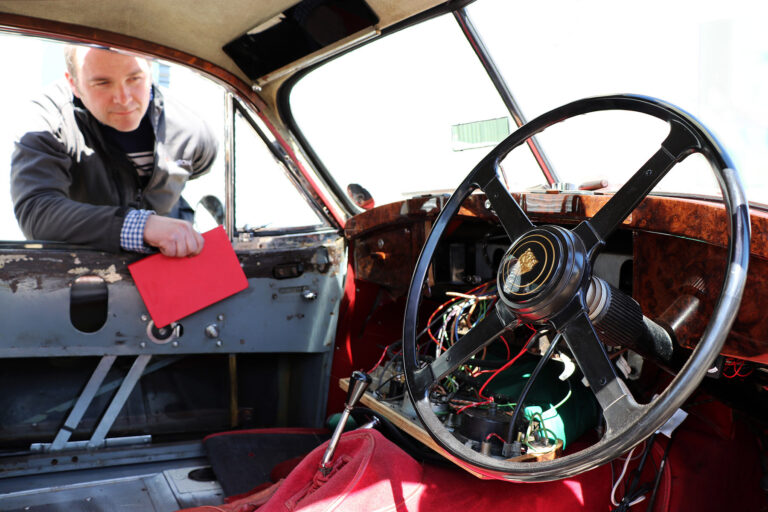For classic car aficionados, buying and maintaining a vintage vehicle is about more than just driving; it’s about preserving history and craftsmanship. Classic cars, on the other hand, require specific inspections due to their age, intricate restorations, and specialised requirements. Classic Car Inspection Services provides expert evaluations that reassure purchasers and owners about the originality, condition, and safety of their automobiles. In this tutorial, we’ll look at the significance of vintage automobile inspections, what they normally entail, and how owners may protect their investment.
Why Are Classic Car Inspections Important?
Classic car checks are required for anyone purchasing, restoring, or maintaining an antique automobile. Unlike current vehicles, classic cars frequently feature unique parts, restoration work, and historical characteristics that necessitate specialised knowledge to evaluate. This is why standard car checks are inadequate. Classic automobile checks are performed by experts who are familiar with the intricacies of older cars, including specialised production techniques, historical authenticity, and mechanical integrity.
Benefits of a Classic Car Inspection
Ensures authenticity and value
Many buyers view old cars as attractive investments. Inspections help to check the authenticity of each component and determine whether parts have been replaced or restored. This information influences both the car’s resale value and attractiveness among collectors.
Assessing Condition and Safety
Classic cars are frequently decades old, and their components may have seen wear and tear over time. A professional examination looks for potential safety hazards, structural flaws, and general conditions, ensuring that the vehicle is safe to drive and ready for restoration if necessary.
Preventing expensive repairs
An examination helps to uncover problems early on before they become costly. This is especially useful for individuals considering a purchase because it allows them to negotiate repairs or change their offer based on the car’s condition.
Providing Peace Of Mind
Classic car inspections instill confidence in purchasers and owners about the vehicle they are purchasing or maintaining. Knowing the car’s true condition allows people to enjoy the ownership experience without being concerned about hidden faults.
What Does a Classic Car Inspection Include?
Car Inspection in Birmingham are extensive and detailed, with hundreds of examination points. Professional inspectors evaluate everything about the car, including its mechanical systems, historical correctness, and cosmetic attractiveness. Here are some of the primary areas usually covered:
Mechanical Evaluation
Engine and Transmission: Inspectors look for evidence of wear and damage, such as leaks, noises, and vibrations. They inspect the engine’s health, including the carburettor, fuel system, and cooling system. The transmission’s operation is also inspected to ensure it shifts smoothly and without grinding or slipping.
Suspension and brakes: The suspension and braking systems in classic cars may differ from those in current vehicles. Inspectors check the suspension system’s integrity, including shocks, springs and bushings. Brake systems, such as drums or disc brakes, are evaluated for performance and safety.
Electrical System: Vintage cars frequently have antiquated wiring that can become fragile with time, posing a safety issue. The inspector inspects the battery, wiring, and connections to ensure that the electrical system is dependable and safe.
Exhaust and Fuel System: Inspectors inspect the exhaust and fuel systems for evidence of rust, leaks, or damage. A well-maintained exhaust system improves engine performance and eliminates dangerous emissions.
Body and Structure Integrity
Frame and Chassis: Inspectors meticulously inspect the vehicle’s structure and chassis for any evidence of rust, corrosion, or damage. Classic cars are especially vulnerable to rust, which can weaken the vehicle’s frame.
Body Panels and Paint: The body panels and paint are meticulously inspected. Inspectors search for evidence of previous repairs, repainting, or body filler, which may suggest previous accidents or restoration work. This information is critical to assessing the car’s legitimacy and resale value.
Doors, Hood, and Trunk Alignment: The doors, hood, and trunk are aligned to guarantee that they open and close properly. Poor alignment may signal structural difficulties or inadequate restoration work.
Interior Assessment
Inspectors examine the upholstery, dashboard, and interior trim to determine their originality and condition. Cracks, tears, and stains are documented, as are any non-original changes.
Instrument Panel and Gauges: The gauges and instrument panel must function properly to monitor the car’s performance. Inspectors ensure that all instruments are working and correct, including the speedometer, tachometer, and fuel gauge.
Seats, Carpeting, and Headliner: The condition of the seats, carpeting, and headliner is also considered, as these features influence both the car’s beauty and resale value. Inspectors may notice worn or replacement parts.

